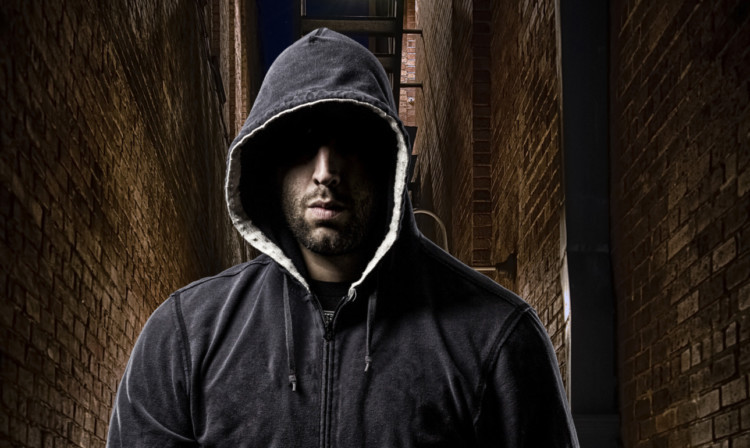
A shock probe has laid bare the terrifying reality of Scotland’s house-breaking epidemic.
According to a new analysis of the Scottish Government’s crime and justice survey, which measures the public’s experiences of crime, one in three Scots live in fear their home will be broken into.
It also reveals one in 20 feel unsafe in their home at night while one in four are worried they will be mugged or robbed.
The shock figures come two weeks after it was revealed the number of break-ins has shot up by a quarter in the last two years, with a home being ransacked every 15 minutes.
Former senior detective Graeme Pearson has warned the numbers could significantly undermine public confidence.
The Labour justice spokesman said: “One of the biggest fears for most people is the sanctity of their home being breached. When that happens it has a significant effect on every member of the family.
“If you can’t trust the security of your own home, it makes it very difficult to have any confidence about the future at all.”
The Scottish crime and justice survey studied the public’s experience of crime rather than just those crimes reported to police.
It exposed a significant disparity between the Government’s interpretation of crime in Scotland, and public perception.
According to the survey a quarter of people feel unsafe walking home at night, while nearly half are convinced crime has got worse in the last two years.
In 2012/13 there were 35,000 housebreakings in Scotland, which represents a 40% increase from 25,000 in 2008/09.
Official Police Scotland statists are significantly lower, as they do not include unreported burglaries.
According to the official numbers, there were 21,515 break ins in 2012/13, meaning 13,500 were unreported.
Mr Pearson added: “What people are seeing doesn’t reflect the numbers and statistics given by the Government. That’s when the public lose confidence.
“The notion of security within communities, knowing you can come home from work at night and your home is safe and secure is of critical importance.
“These figures fly in the face of what the justice secretary said about how well Scotland is doing on being crime-free and being free of the fear of crime.
“The reality is that for ordinary people there is a concern about security.”
The SNP have previously trumpeted leading Scotland to its lowest level of recorded crime in almost 40 years.
But the SCJS survey paints a very different picture of a country gripped by fear.
Almost half of the 12,000 participants worry they’ll be a victim of crime in the next year.
More than a third of all Scots are so concerned about being a victim of crime that it has an impact on their day-to-day lives.
A staggering 27% do not feel at ease walking alone in the dark, while more than 260,000 don’t even feel safe in their own homes at night.
A spokesperson for Age Scotland said: “Fear of crime can contribute to isolation and damaging health outcomes.
“It’s important that Scotland’s older people feel safe and secure.”
According to the survey, two-fifths of people are not confident their local police can prevent crime.
A quarter have little confidence in their crime solving ability, and a third don’t think criminals will be caught.
Mr Pearson insisted: “The problem with the Government is they don’t want to know the reality and want to be able to spin the numbers to make it sound like everybody is doing well and our homes are all safe.
“The reality for many people is that crime is a considerable, ongoing worry.”
A spokeswoman for the Scottish Government defended their record on crime.
She said: “The survey shows that for most crimes, people think that they are more at risk of being a victim of crime than is the reality, and are more likely to believe crime is rising nationally than in their local communities.
“However, there is a clear trend in Scotland which shows that since 2008-09, Scots feel safer than ever before.
“Almost three-quarters of adults said they felt very or fairly safe walking alone in their neighbourhood after dark and just over three-quarters perceived the crime rate in their area to have stayed the same or reduced in the past two years.
“We also know that people are more likely to think they might experience crime than actually did, and six times as many adults thought they were likely to have their home broken into than actually experienced this crime.
“Housebreaking in Scotland is on a long-term downward trend having fallen by over 80% since 1991. Over the last year, Police Scotland provided additional resources to specific areas across Scotland where housebreaking identified as a particular issue.
“Dedicated policing teams created to exclusively investigate housebreakings and apprehend individuals responsible. Housebreaking will
continue to be monitored throughout Scotland and extra support will be provided to any area which needs it.”
A Police Scotland spokeswoman added: “Crime is at a 39 year low and public confidence in policing continues to rise. The statistics quoted in the survey about perceptions of crime are from 2010/2011 which is several years before the creation of Police Scotland.
“We recognise there has been an increase in housebreaking figures overall and that the ongoing work on the current Operation Reduce and Catch helps address this via a targeted policing response.
“According to the survey, although 75% of all crimes involve property, only 3% involve housebreaking and the majority of this 3% refers to non-dwellings such as garages and sheds.”
By Ben Robinson and Marc Meneaud

Enjoy the convenience of having The Sunday Post delivered as a digital ePaper straight to your smartphone, tablet or computer.
Subscribe for only £5.49 a month and enjoy all the benefits of the printed paper as a digital replica.
Subscribe